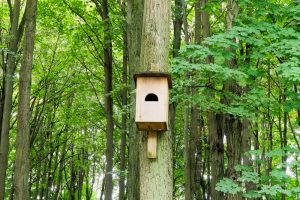 When bats take up residence in your residence, they aren’t doing it to cause damage or stir up trouble; they’re just in desperate search for food, shelter, and safety. And, because of a wildlife epidemic known as white-nose syndrome (WNS), more bats are looking for secure places to rest and raise their young than ever. Here’s everything you need to know about WNS and what to do if you suspect it near you.
When bats take up residence in your residence, they aren’t doing it to cause damage or stir up trouble; they’re just in desperate search for food, shelter, and safety. And, because of a wildlife epidemic known as white-nose syndrome (WNS), more bats are looking for secure places to rest and raise their young than ever. Here’s everything you need to know about WNS and what to do if you suspect it near you.
What Is White-Nose Syndrome?
Fatally infecting countless bats each year, WNS is a fungal disease characterized by white growths across bats’ ears, wings, and muzzles. During winter hibernation, bats rely on stored energy to idle through the season, which suppresses their immune systems and makes them more susceptible to infection. Bats contract WNS when exposed to a fungus, known as Pseudogymnoascus destructans, during this seasonal hibernation. And, when bats attempt to fight off WNS, they quickly become irritable and erratic—which uses up their stored fat and leads to mortality.
Signs of White-Nose Syndrome
Although researchers have not spotted cases of WNS or traces of the WNS fungus in Florida, this wildlife phenomenon continues to spread across the nation. Therefore, it’s important to understand how to tell when a bat is showing potential signs of WNS, including:
- White growths around the ears, wings, and muzzle
- Daytime flight during winter months
- Irritable behavior and signs of dehydration
Whether you come across a potential case of WNS in the wild or in your home, you should never try to treat, touch, or tend to the animal. Contacting your local pest professional is the most effective way to ensure that both you and local wildlife stay safe.
How to Help Local Bat Species
WNS has been unexpectedly sweeping into new states, which means that even the southernmost regions must play a part in protecting their local species. Because there are multiple cave-dwelling bat species in Florida, local cave explorers need to take additional precautions with their outdoor expeditions. Between cave explorations, disinfect all gear and equipment used in the previous one to help prevent the spread of potential fungi. Similarly, avoid any spots that bats may use for hibernation during the winter season. Spots like caves or other underground passages are safe for bats to hibernate, but any disturbance can disrupt their cycle and cause even faster energy depletion.
What to Do if You Find a Bat with White-Nose Syndrome
Although there’s no evidence that WNS can affect humans, sick bats still display unpredictable behavior that can quickly put you at risk. If a bat wanders into your home displaying potential symptoms of WNS, call the team at Critter Control® of Orlando. Our wildlife technicians can evaluate the animal, safely remove it from your home, and report the case to local wildlife agencies. To learn more, contact us today for a free inspection at 407-295-7194.





